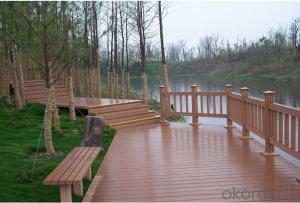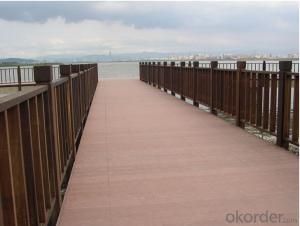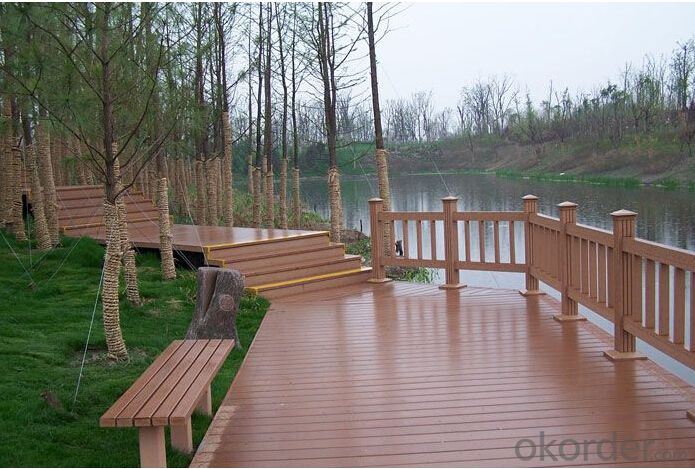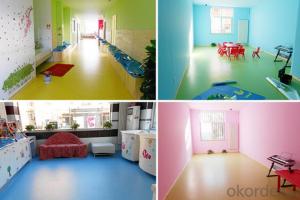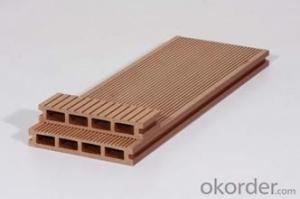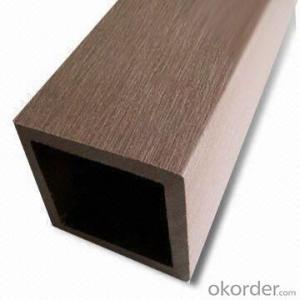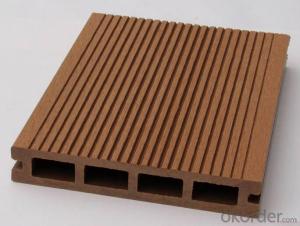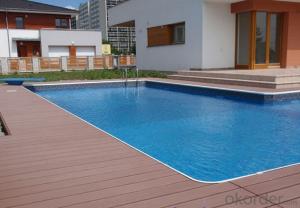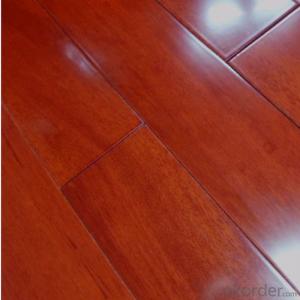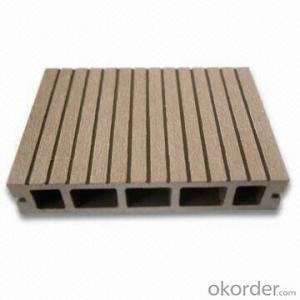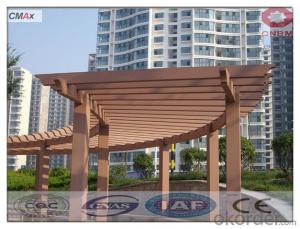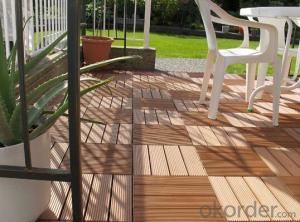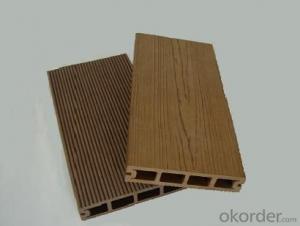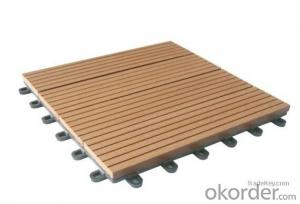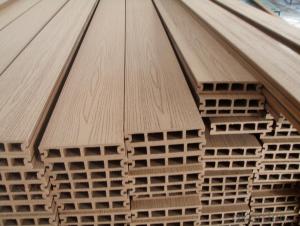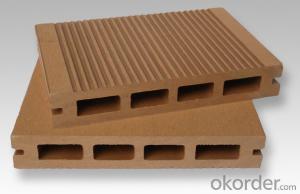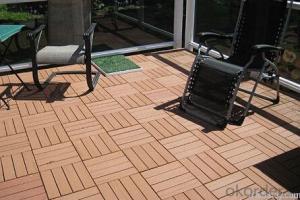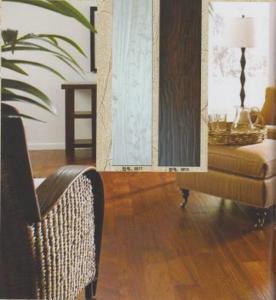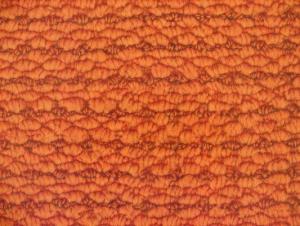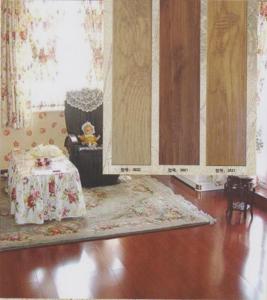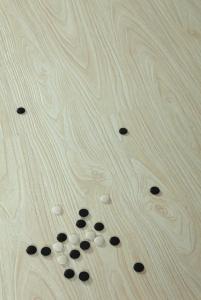WPC Eco-friendly WPC for Outdoor Decking
- Loading Port:
- Qingdao
- Payment Terms:
- TT OR LC
- Min Order Qty:
- 300 m²
- Supply Capability:
- 1000000 m²/month
OKorder Service Pledge
OKorder Financial Service
You Might Also Like
1> What is WPC?
WPC, simply for wood plastic composite.
Wood Plastic Composite is made from a unique combination of plant fiber and recycled plastic
according to high-tech formula.
It offers the best advantages of plastic and wood. The plastic shields the wood from moisture and
insect damage, and the wood protects the plastic from UV damage and gives you a natural feel.
It has characteristics of high strength and rigidity, acid and alkali resistance, corrosion resistant
and without formaldehyde, it is a real green environment protection building material.
2> What’s WPC used for?
WPC can be used for military equipment, urban utilities and landscaping, architecture,
gymnasiums, outdoor decking, fencing, pallets, indoor and outdoor decoration.
FAQ
3> Why choose WPC decking?
*Natural colour
*Slip resistant
*Resistance to water, rot and crack
*Guaranteed to last
*Low maintenance
*Beautiful and broad range of finish
4> What are the main kinds of WPC currently?
*WPC decking board
*DIY decking board
*WPC wall panel (wall cladding)
*Garden fence (railing)
*WPC outdoor furniture (gazebo, pavilion, outdoor desk&chair, dustbin, pet house…)
5> Ingredients of WPC?
30% HDPE+60% bamboo/wood fiber+10% Chemical additives.
6> How’s WPC made?
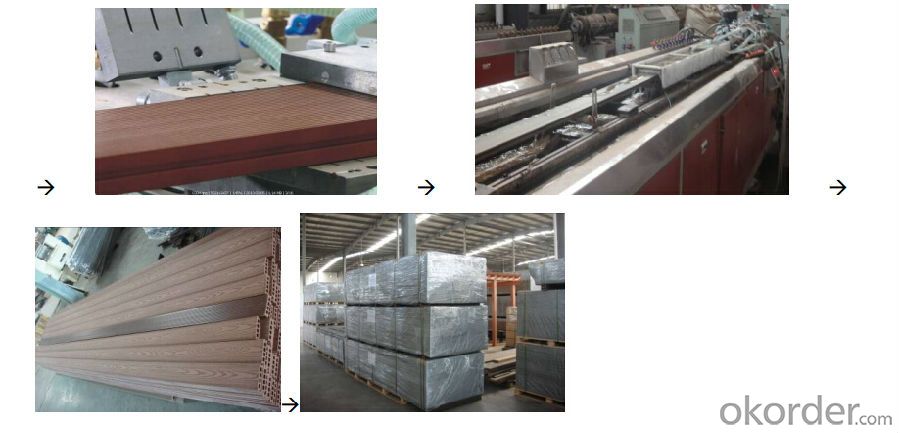
7> Specification of WPC?
A. Weatherability
suitable from -40° C to +60° C, UV resistance
B. Test Data
| Testing Item | Technical Requirements | Value of Test |
| Water Content % | ≤2 | 0.4 |
Rockwell Hardness (HRR) | ≥60 | 80 |
Thickness Swelling after Water Absorption (%) | ≤1 | 0.2 |
Screw Holding | Surface of board ≥1300 | 3870 |
| End of board ≥1200 | 3460 | |
Static Bending | ≥20 | 28 |
Bending Elastic | ≥1800 | 4610 |
Abrasion | ≤0.08 | 0.06 |
Hammer falling impact in low temperature, broken (pcs) | ≤1 | 1 |
State after Heating | No babbles, cracks and pockmarks | - |
Rate of Size Change with Heating (%) | ±2.5 | -0.38~-0.45 |
Report Number: 201107126
Type of sample: 90x25x820mm, Solid
C. Surface treatment

D. Main colors available:

charcoal-black; classic-white; rinforest-canopy;sand-castle; stepping-stone; tree-house; vintage-lantern .
E. How to install

Company Information
8> About CNBM and It’s WPC products
China National Building Material Corporation (CNBM), long history since 1984 is one of the top
fortune 500 corporation and central enterprise with total assets of more than $20 billion and
120,000 staff.
Our unique advantages:
* Preferential payment terms
* Good and reasonable price
* Quality guarantee -- CNBM won't let a single small deal ruin our reputation and brand, so quality is
our lifetime.
* Professional team for CRM order processing & QA & logistics
*Global logistic database, originated from Dubai
- Q: I want to put down peel/stick vinyl tiles in my kitchen and bathroom. Both rooms have Vinyl flooring now and it's not damaged in anyway I just hate the colors. Can I put the peel/stick tiles on top of the existing floor or do I have to pull it up? Also should I use some sort of glue to add extra holding and will this kind of floor last or will it start peeling up in a few months?
- If you do not put it down correctly/perfectly, yes, it will start peeling up at the corners relatively soon. While you may be tempted to lay it down on top of the vinyl flooring you already have, this will ensure a weak bond and create two failure points - the adhesive on the new tile, or the adhesive on the old vinyl. If you can stomach the extra work, pulling up the old vinyl is the only way to make the new stuff last. For a very small investment of around $30 you can pick up a flooring book at your local hardware store. When you consider the time, effort and money involved in home rennovations, these books are invaluable. Good luck!
- Q: I have a very small bathroom off of my master bedroom. It has black ceramic floor and I don't like it. Can ceramic be painted? If not, is there any way to go over it without tearing it all out?
- If it is glazed and hi-gloss you might have to use a de-surfacing compound (etching compound first), other than that, knock your self out!!
- Q: Because of the conditional twitching, there was a layer of not too thick carpet on the concrete floor, a layer of mats on the carpet and a bed sheet, and I did not know that it was good for the body, I am living on the 26th floor of the elevator apartment more
- The warmth of the room is the flow of heat through the gas flow, from the perspective of fluid mechanics, the room air flow from the bottom up, so the ground is cold air flow where the direct sleep on the ground is not good, Tube is also the cold air flow of the fastest place, easy to cause harm to the body, I have had this experience, accidentally, rheumatism and seizures of the defensive flames, It is safe to have a height of about 200 mm or so.
- Q: I hate the tile in my kitchen but my Dad will not let me take it out. I was hoping for something quick and enexpensive. I came across cork flooring. Now..I figured the floating meant no adhesive. Has anybody applied this type of flooring on top of tile and did it work? Any other suggestions are welcome. Thanks!
- Floating floors can be installed over tile as long as the tile is level and even. If the tiles are uneven then the floating floor will also be uneven and could crack at the joints, depending how it is made and just how uneven the floor below is. Cork is an excellent option for a kitchen, but make sure to apply a urethane clear-coat over it to seal the joints and prevent water from penetrating to the substrate material below the cork. The cork itself is resistant to mold and mildew and water damage, but the layers of the floating floor system below the cork are not, so do it properly so you won't be having to redo it again too soon. Good luck!
- Q: I will be using prepaded laminate flooring on top of a concrete slab. Do I need to use an adhesive ? How does the floor stay down ?
- is it a rolled sheet laminate floor? if so then yes u will need an adhesive to told it down...the direction on the glue will tell u what size V shaped notched trowel to use...must of the time you'll need a 1/8 trowel.....roll back the flooring half way and apply the glue to the floor....fold back over glue and press into place....u can rent a 100 lb. roller for this which help it stick to the floor and squeezes all the air out from underneath ...repeat for the other half of flooring....if no roller then press the floor into place with a soft towel
- Q: I am looking at installing a floating laminate floor in my house and would like any input on which type of flooring would be best since there are so many options. (ex: thickness, brand, COST, ease of installation, underlayment already attached vs laying underlayment, type of wood, etc...) I want the floor to look nice but I don't want to break the bank either. Any help and/or tips from someone who has installlation experience would be greatly appreciated. Thanks in advance
- Mr. Obvious and Big Fella are right on. the only thin I would add is get your floors as flat/level as possible. Depending on the brand and type, most do not like bumps/dips greater that 1/8 over 8-10'. Have used both Pergo and Kronotex (30 yr with underlayment and 10 yr with UL separate) and liked the results I got with both of them (caught the kronotex on clearance for $0.33/sq ft). With a good vapor barrier @ the foundation, (always get a moisture test before you start) and a level floor only the person installing it can make it look bad.
- Q: I currently have a house where the bathroom floor is rotting in the corner right by the bath tub, how do we fix this and then is there something that we can lay underneat the new tile to prevent moisture from getting through?
- pull up the floor and replace rotten section and level. tile grout and seal new floor. use an approved expandable caulk around the tube/floor and there should be few problems. keeping the water above the tile is what you need to do, and the crack by the tub to the tile is most critical.
- Q: My new house has blonde floating floors and I have no idea how to maintain them. My family doesn't eat or drink outside of the kitchen and we typically take off our shoes at the door. I have a shorthaired little dog who isn't going to be very happy when I try to put doggy house slippers on him because I'm so worried about scratching the floor. I'm OCD; it'd drive me crazy! I ll be using protectors under all furniture.What type of cleaner would one use weekly or biweekly for thorough cleaning on this kind of floor?Is it ok to use a Swiffer spray? I detest vinegar. Can I cover the Swiffer with a dryer sheet or will that coat the floor?Thanks
- I would call a local store that installs that kind of floor and ask their advice. Personally, I mop my wood floors with white vinegar and water in a spray bottle. The mop head is only damp.
- Q: do all lab floors have to be non absorbing like is it a law or anythin?
- It is page 9, paragraph 9 Laboratory flooring in chemical use areas and other high hazard areas (suchas biological containment facilities) shall be chemically resistant and preferably one-piece construction with coverings to the wall. Good Practice A continuous floor reduces the potential for liquid absorption. Covings are recommended to facilitate clean up. Surfaces should be as free of cracks, crevices, seams, and rough surfaces as possible to avoid surface contamination traps. Found this under [Furniture and Fixtures ] Wet chemical laboratories and darkrooms should have solvent resistant coved flooring using sheet goods rather than tile, web.princeton.edu/sites/ehs/labsa... Could not find a hard answer about non absorbing floor coverings. In any Wet Lab, the possibility of chemical spills is ever present. To me it makes good sense to have a non absorbing floor to make clean up 100% Browse around on the source links below to find more input. Wingman
- Q: Home ready to install the wood floor today saw a feeling that they are not good to say that the floor of their home is not easy to deformation of the wood is also easy to deformation anyway wood to hides the assembly of locusts, Check the pine wood belongs to the cork can not do the wooden floor? My home is plumbing to ask the wood to do the wood floor in the end will not be easy to deformation what? Hope that everyone or used friends to give advice ~ more
- If it is big on the floor, it is nothing, the key is there is no guarantee that the big brand processing technology is more advanced, there is no problem to deal with, but the big hides Still very few
Send your message to us
WPC Eco-friendly WPC for Outdoor Decking
- Loading Port:
- Qingdao
- Payment Terms:
- TT OR LC
- Min Order Qty:
- 300 m²
- Supply Capability:
- 1000000 m²/month
OKorder Service Pledge
OKorder Financial Service
Similar products
Hot products
Hot Searches
Related keywords
